STREET CASTS
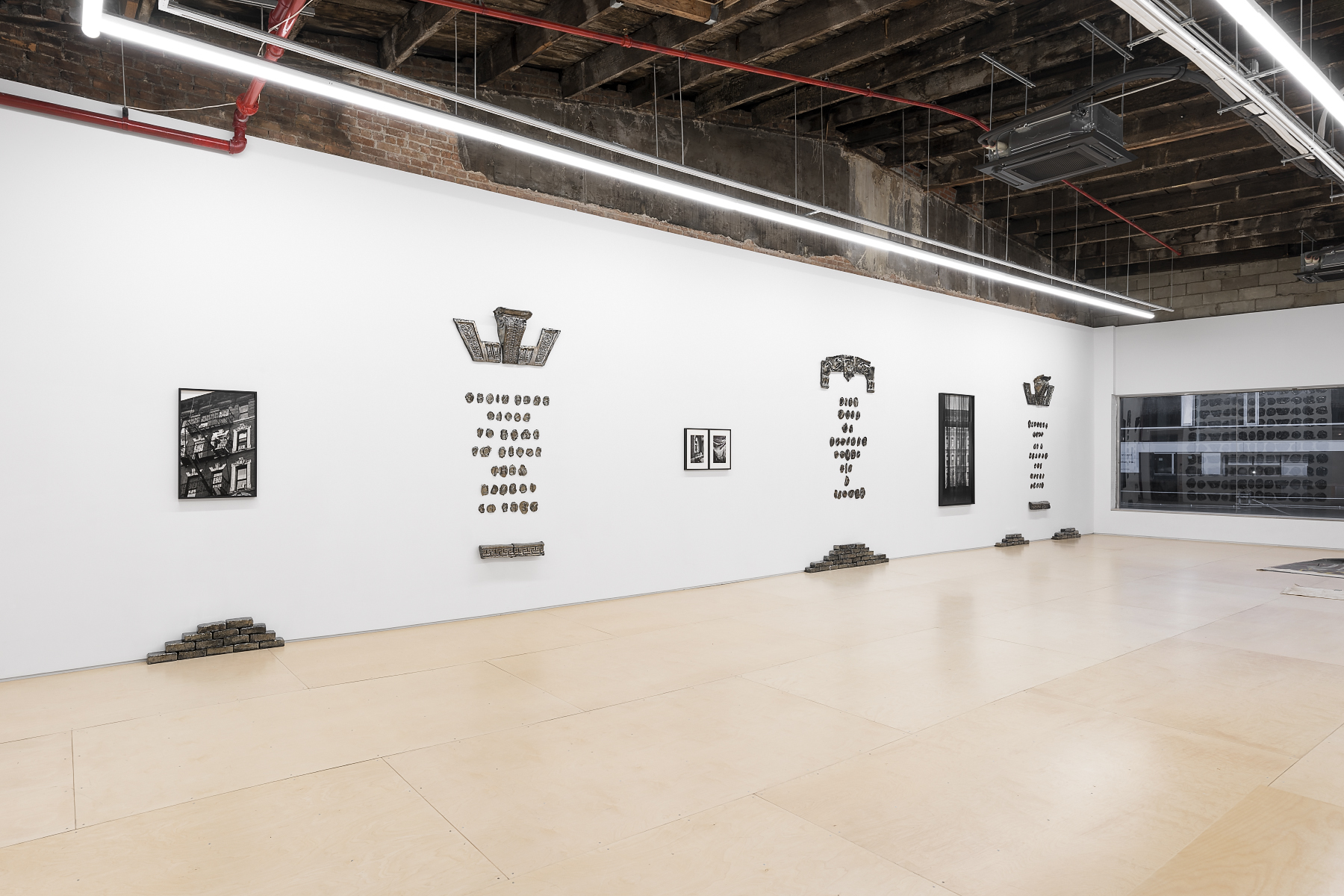
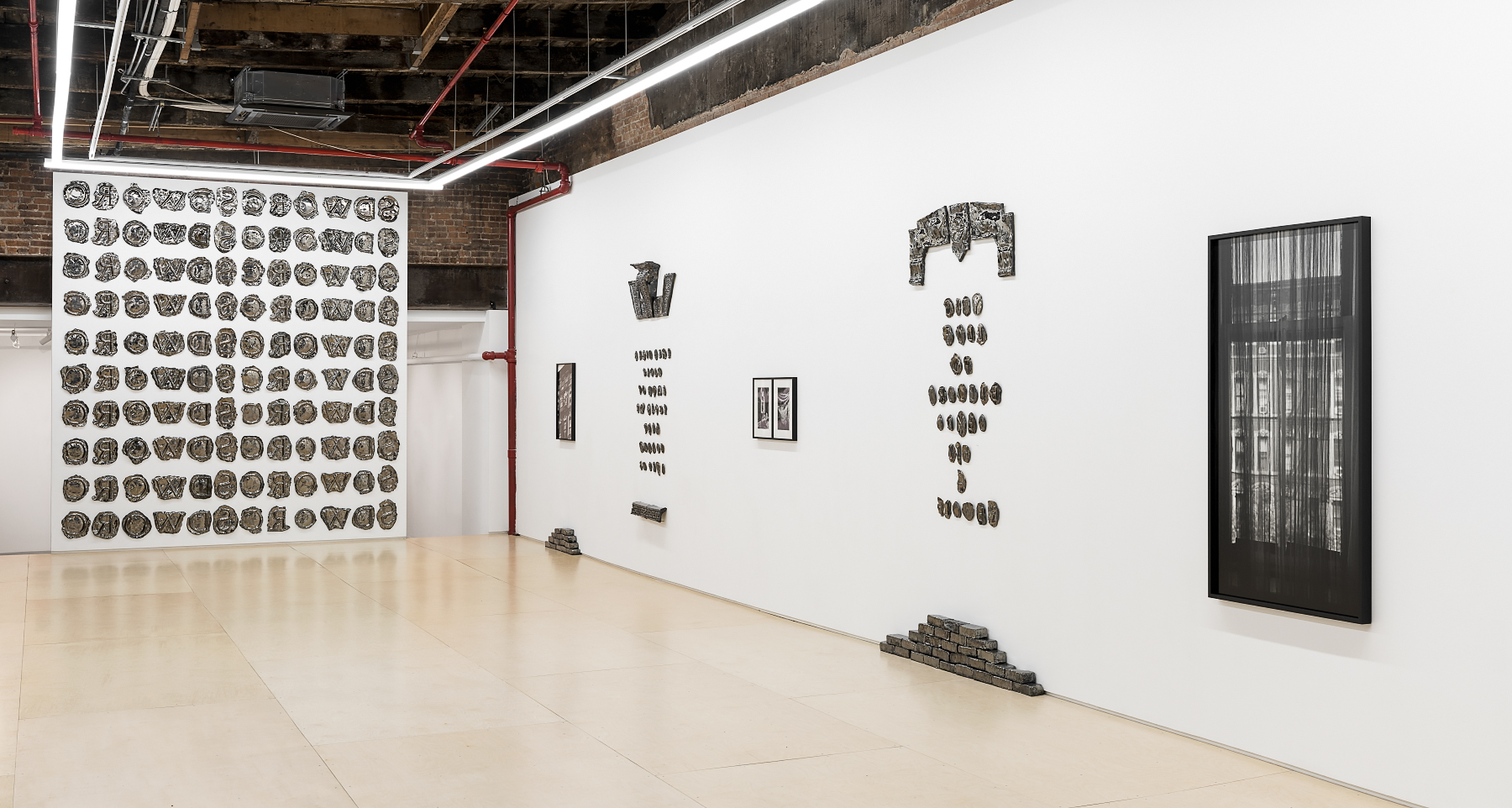
Time Warner Fragment, Broadway, 2023
Glazed stoneware
35 x 35 in (88.9 x 88.9 cm)
AV2303

2pm, St. Marks Pl, 2023
Silver Gelatin Fiber Print
30.5 x 20.5 in (77.5 x 52.1 cm)
AV2300
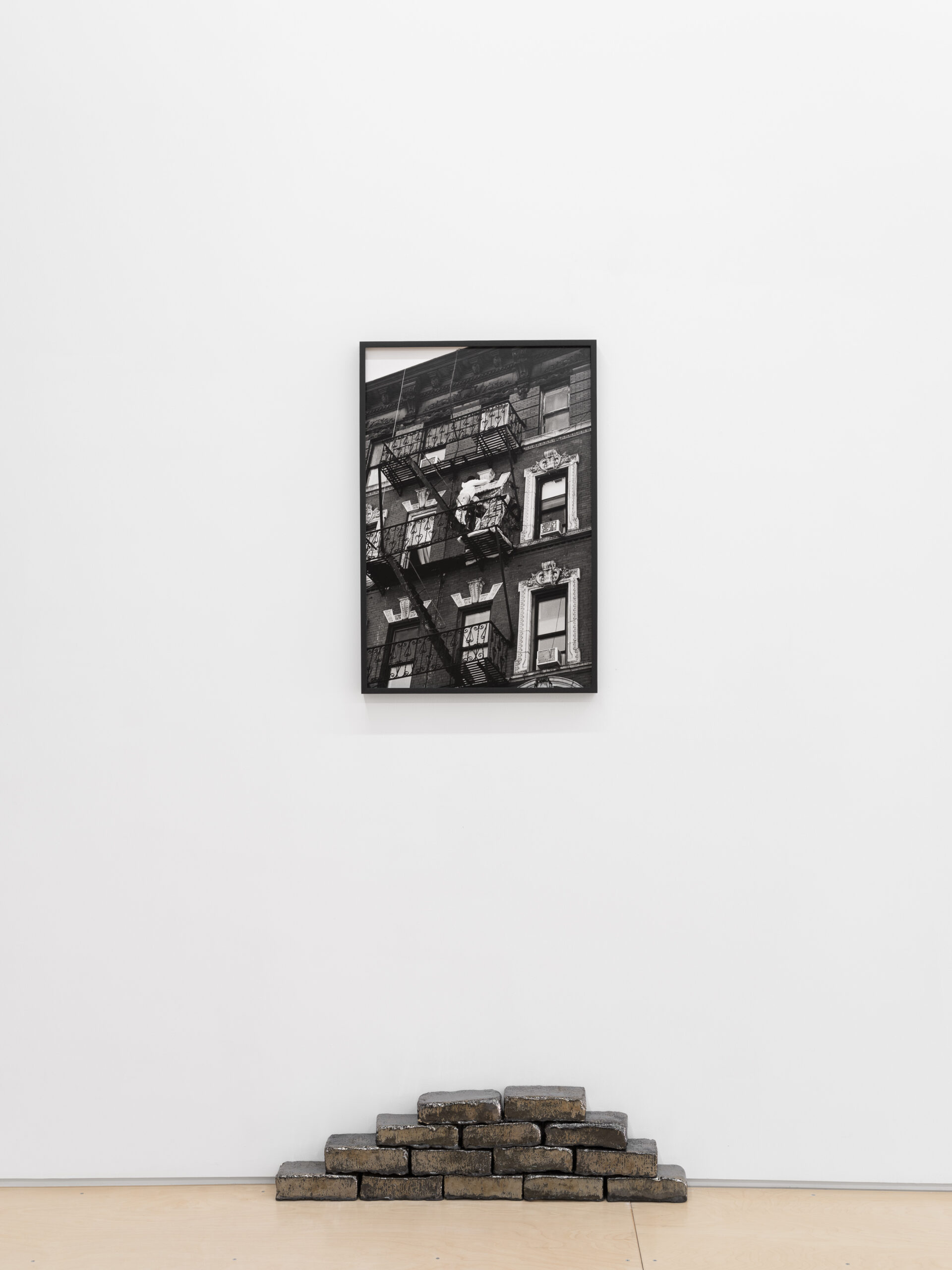
Diptych, 2 pm, St. Marks Pl, 2023
Silver Gelatin Fiber Print
17.5 x 27 in (44.5 x 68.6 cm)
AV2301
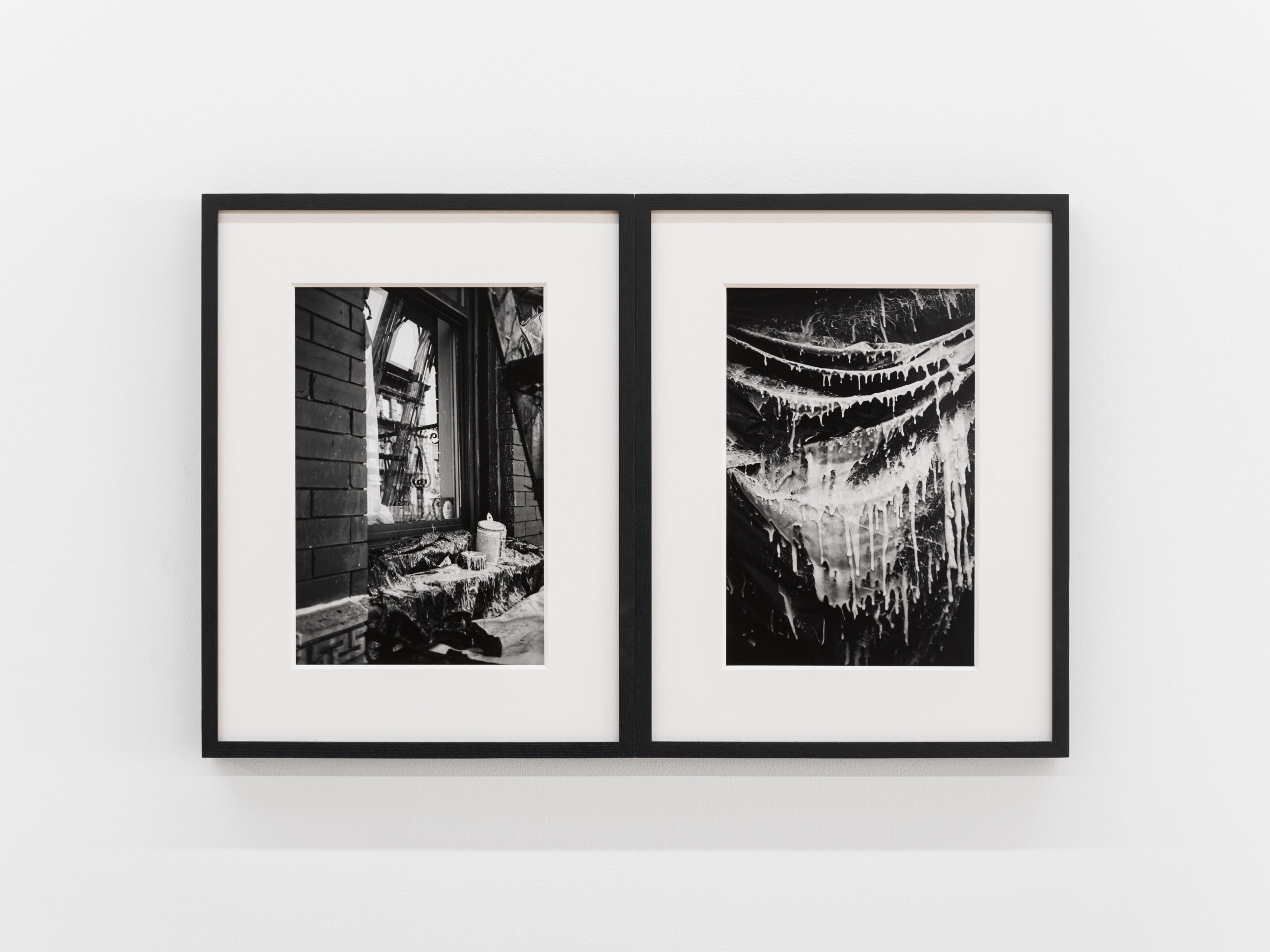
BEGIN HERE CLOSE TO HOME SO CLOSE THEY CANNOT BE SEEN, 2023
Glazed Stoneware, Exterior window pediment and frieze from St. Marks Pl, Unit 18 and letters from Astoria Park War Memorial and Eleanor Roosevelt Memorial
A from ISLAND
B from BY
C from CITY
D from ISLAND
E from ERECTED
G from LONG
H from HONOR
L from PEOPLE
R from ERECTED
S from SERVED
T from THE
W from WAR
88 x 36 in (223.5 x 91.4 cm)
AV2294

CITY FULL OF TROUBLE COMES LIKE A FLOWER, 2023
Glazed Stoneware, Exterior window pediment from Pike St, Unit 2A, bricks from 132 Bowery, Floor 2, and letters from Raymond Van Ingersoll Monument
A from RAYMOND
B from PUBLIC
C from CIVIC
D from DISTINGUISHED
E from JUSTICE
F from UNFLINCHING
G from LONG
H from HIS
I from UNFLINCHING
K from PARKS
L from INGERSOLL
M from RAYMOND
O from MEMORIAL
R from RARE
S from SERVICE
T from THE
U from QUICKENING
W from WISDOM
70 x 37 in (177.8 x 94 cm)
AV2296
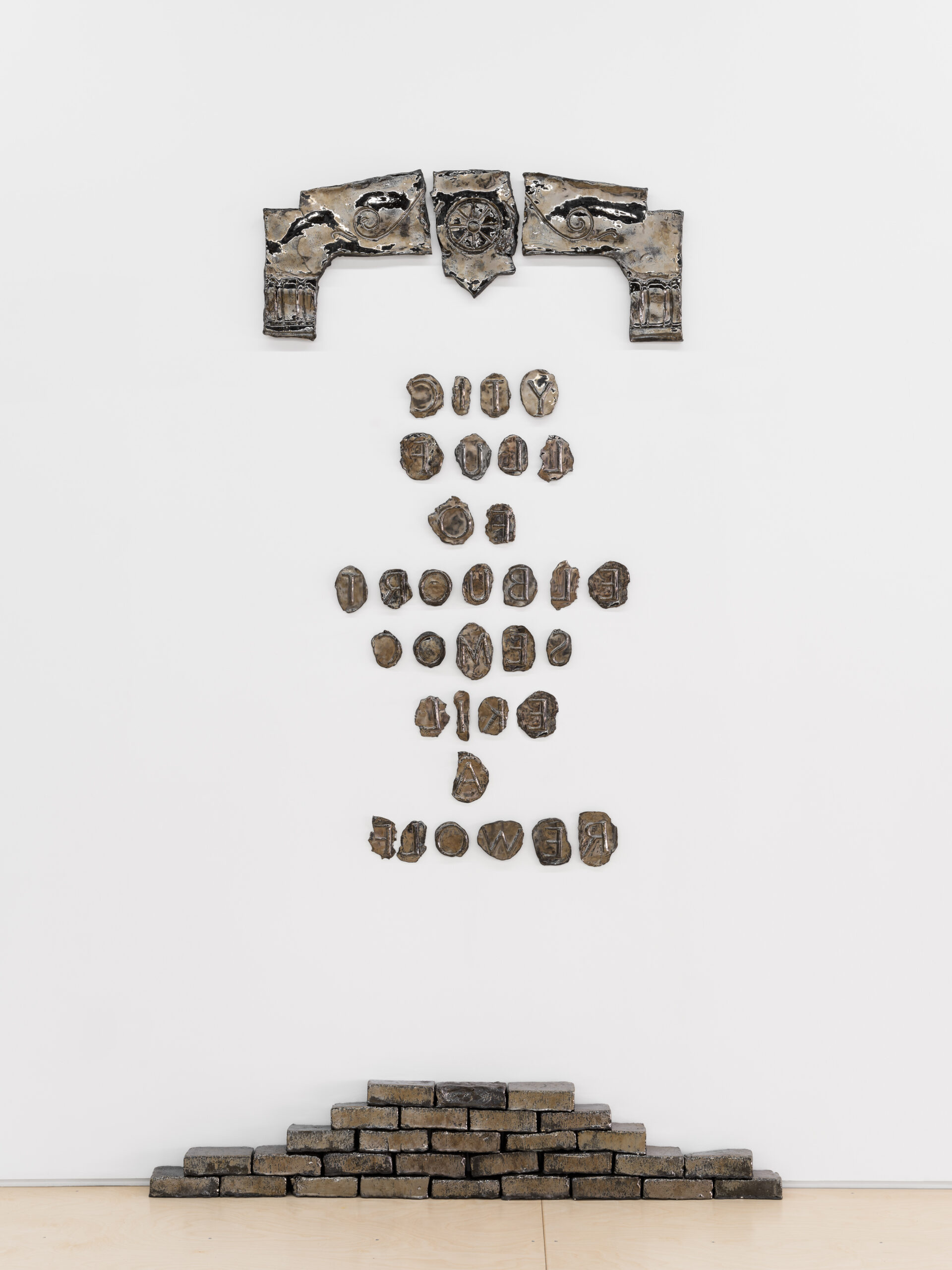
Portal, 5 pm, St. Marks Pl, 2023
Silver Gelatin Fiber Print
64 x 36 in (162.6 x 91.4 cm)
AV2302
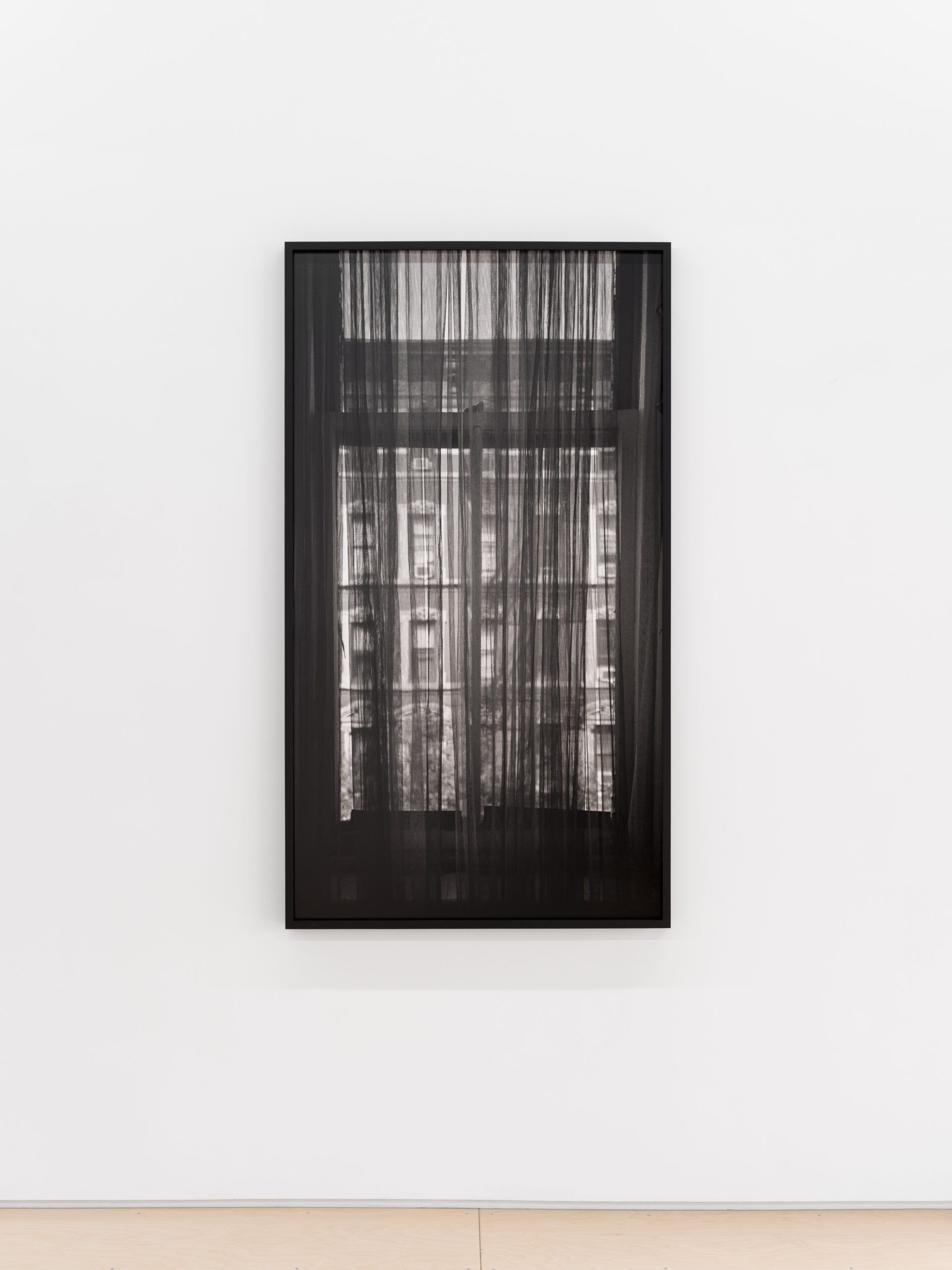
ERECTED ALSO AS A SHADOW SHE WOULD CURSE, 2023
Glazed Stoneware, Exterior Window Pediment and Frieze St. Marks Pl, Unit 18 and letters from Astoria Park War Memorial and Eleanor Roosevelt Memorial
A from ISLAND
B from BY
C from CITY
D from ISLAND
E from ERECTED
G from LONG
H from HONOR
L from PEOPLE
S from SERVED
T from THE
V from SERVED
W from WAR
86 x 34 in (218.4 x 86.4 cm)
AV2295
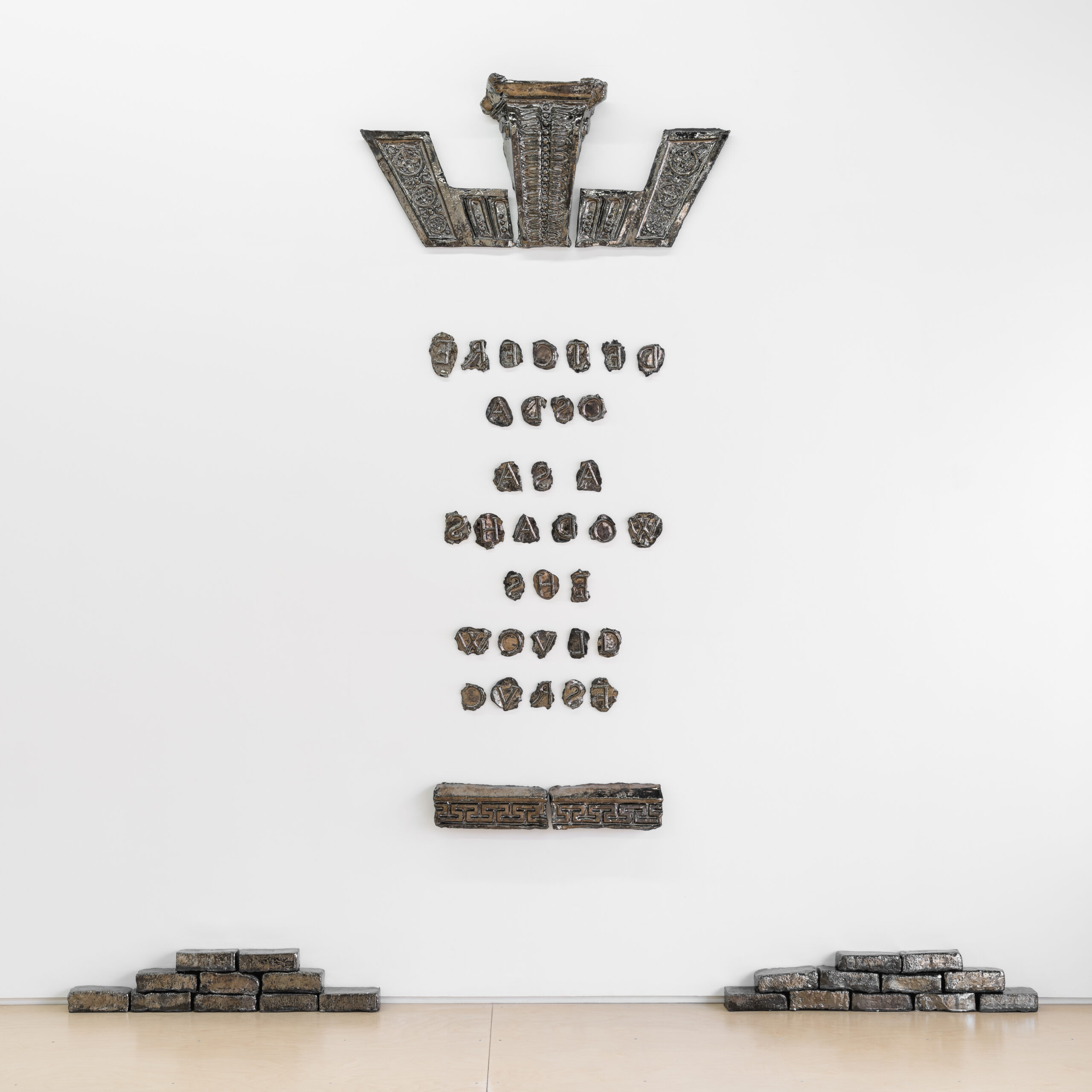
CROWDS, After N.H Pritchard “crowds” from EECCHHOOEESS, 1971, 2023
Glazed stoneware, Letters from facade of Brooklyn Public Library, Grand Army Plaza
C from MAGIC
D from WORD
O from KNOWLEDGE
R from ENSHRINED
S from ACCESS
W from WINGED
144 x 138 in (365.8 x 350.5 cm)
AV2299
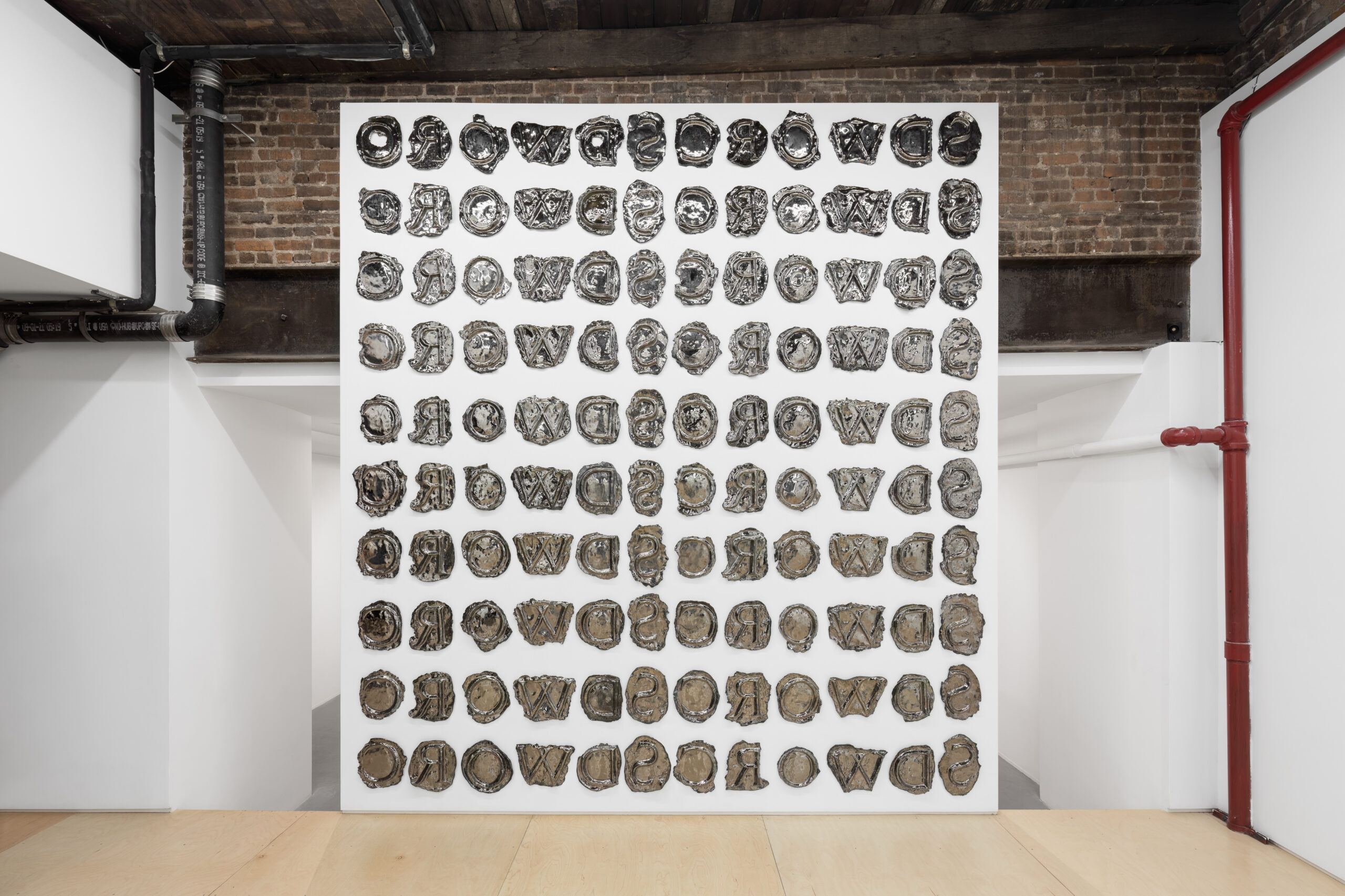
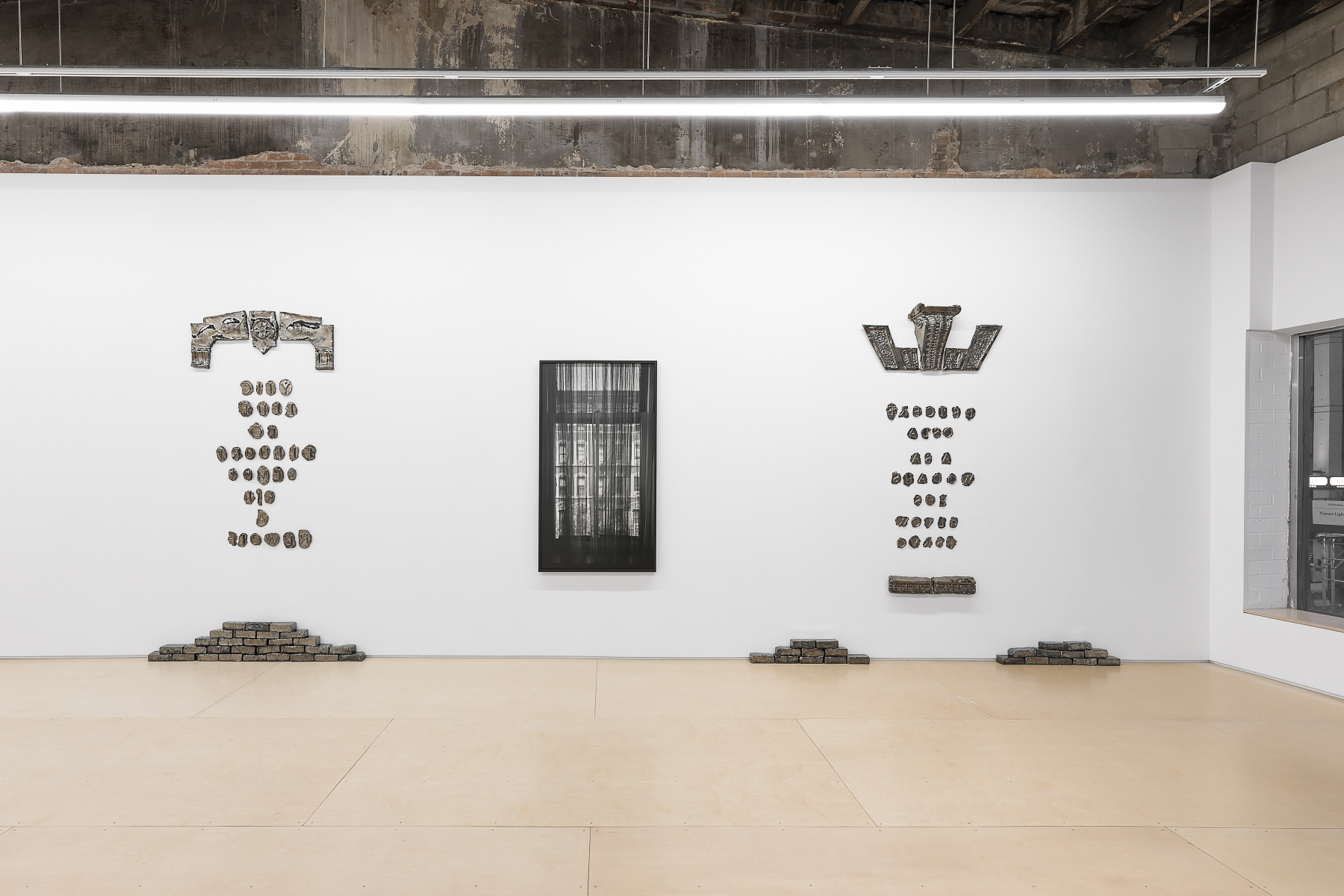
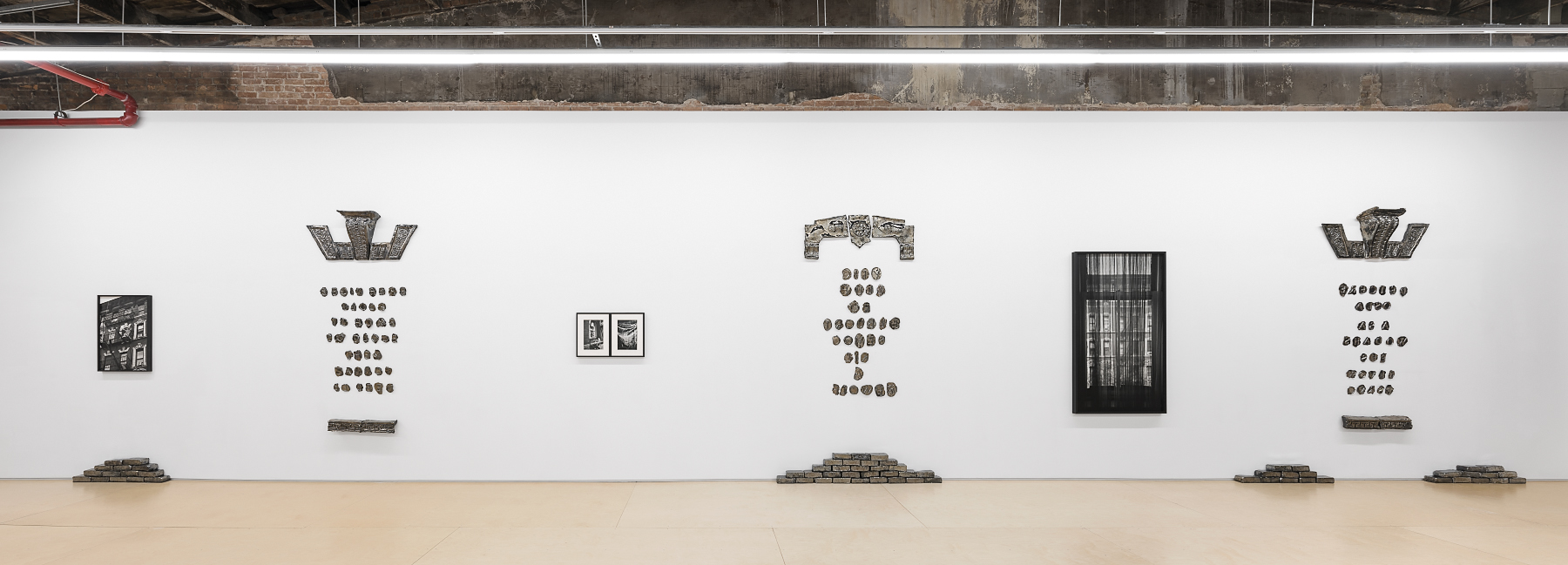
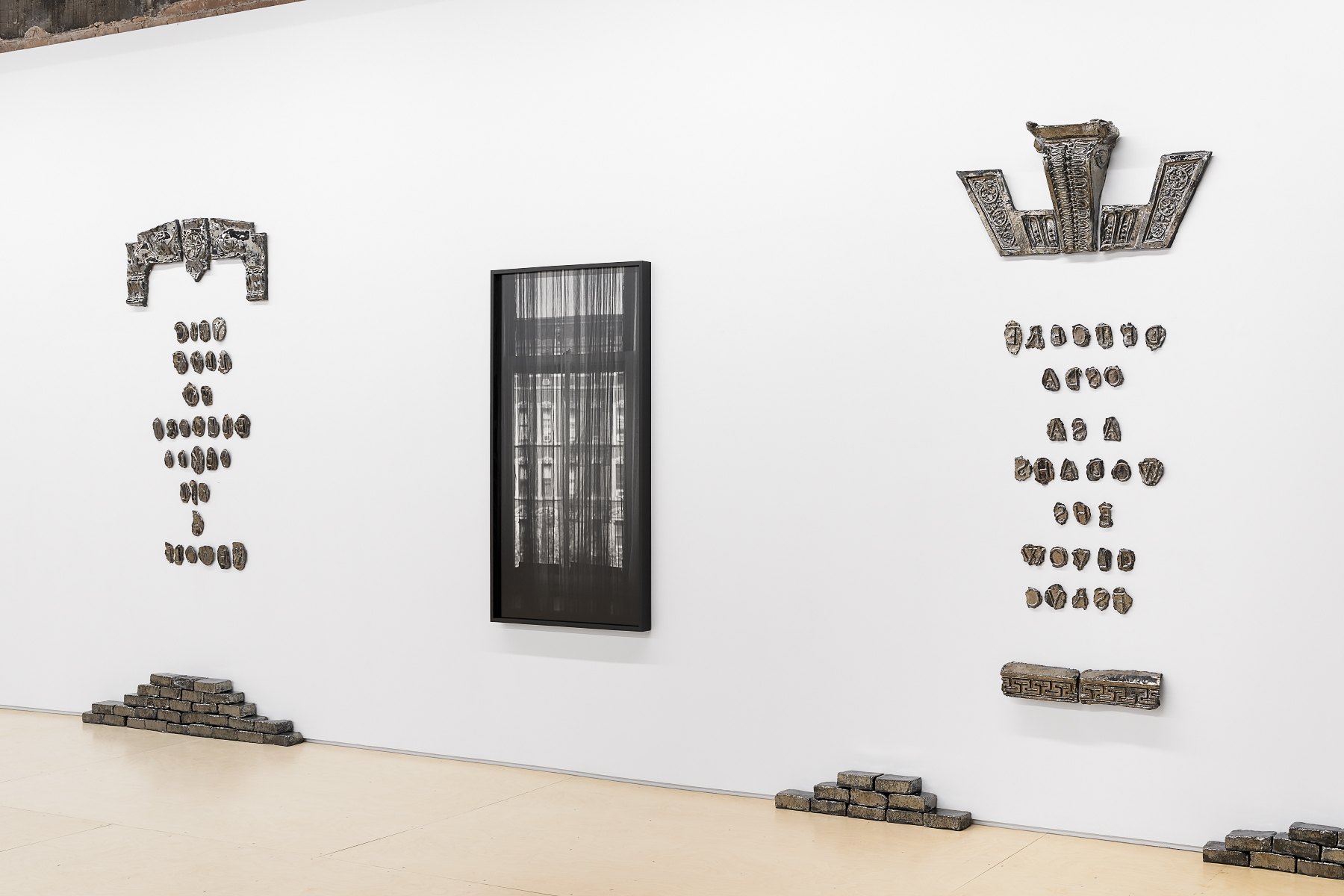
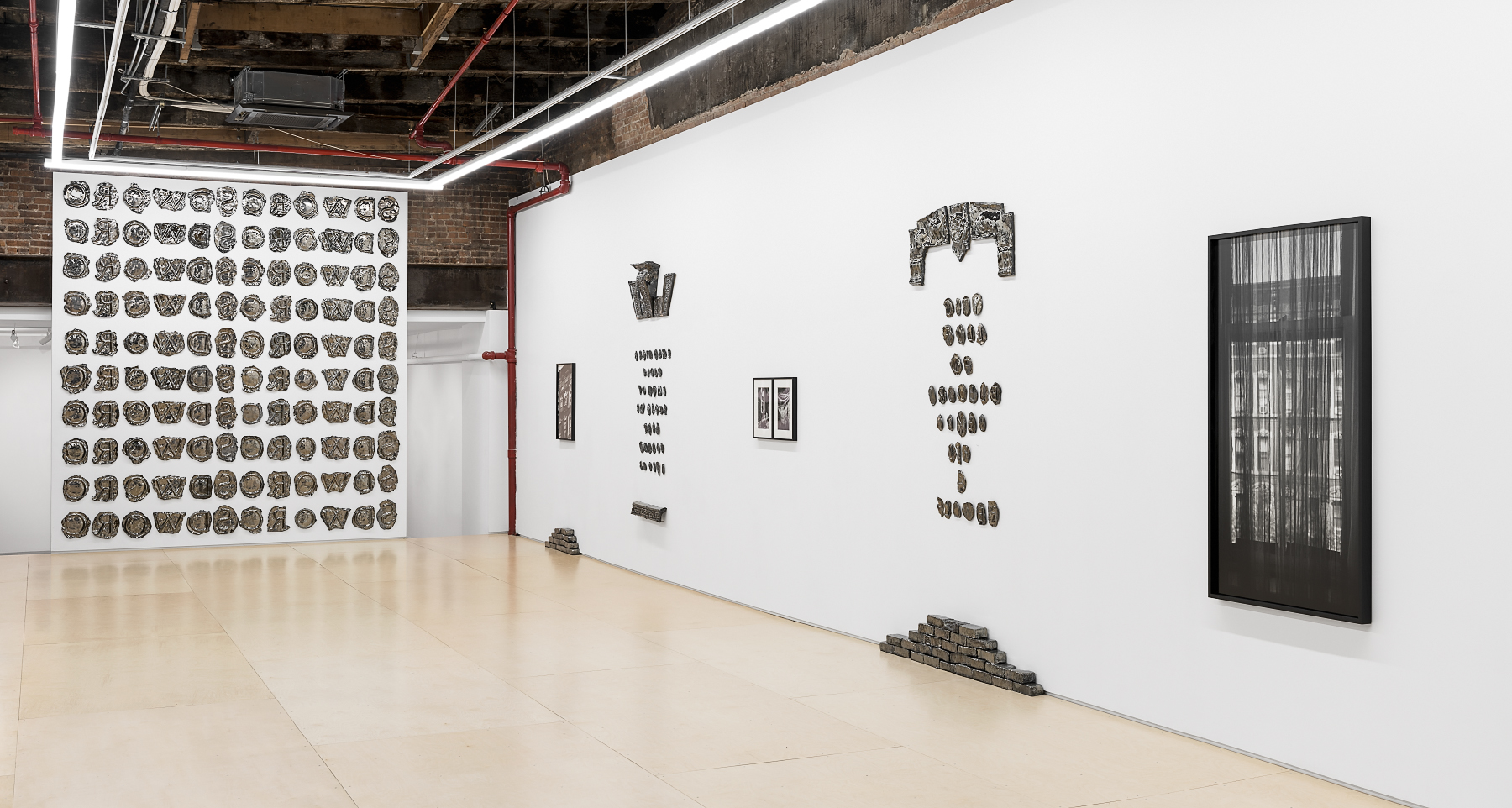
7 Jul–11 Aug 2023
STREET CASTS
Alix Vernet
Helena Anrather is proud to present STREET CASTS, the gallery’s second exhibition with Alix Vernet. Through ceramic sculpture cast from local buildings, photographs, a found object, and video documentation of a performance, Vernet has developed a process of isolating, replicating and rearranging material fragments from the built environment to reveal the continually shifting terrain of New York City’s urban fabric.
Across the interior of the street-facing window of the gallery Vernet has draped a crumpled “building wrap,” a tarp from a local development that was intended to shield the project’s construction from view. What was intended to upkeep a world of pure visuality–a city designed in real estate’s image–has instead become an elongated sigh of a heap. The city is forever molting, its history as easily disposed of behind a synthetic mesh facade as the winds of capital or the cost of a demolition crew. Like a digital rendering suddenly told it exists in a world without gravity, the carefully constructed image of urban vitality gives way to base materialism, falling like a body without bones to the ground. Graffiti monumentalizes the specter through collective expressionism, a trace of the artists’ fleeting notice of a throwaway surface on which to play.
The video Drag documents Vernet pulling the contraband tarp through the street in a reenactment of her heist as weird but banal New York City theater. The building’s classical stone columns pleat and fold as the city passes through itself, picking up bits of trash and leaves as it goes. Forming a kind of cape, the act isn’t exactly heroic, with men offering to assist the artist as she wrestles an idea across intersections. On the surface of the plastic tarp is an image that is a composite of both the facade as it was and as it will be, or as it was projected to be, a collage that commemorates a secret passage from old to new. Within its folds a QR code offers a vision of the promised future that by now presumably is.
In the large-scale silver gelatin print, 4pm, Inside, 122 Saint Marks (2023), a thin film of gossamer curtain separates an apartment bedroom from the world outside. The grid of windows that adorn the tenement building across the way is as unremarkable as its fin-de-siècle frames are beautiful. The air conditioning units that punctuate the grid suggest the most basic evidence of human presence, an interiority that the calm setting in which the camera is placed conjures as an eye of the storm hovering above the busy Lower East Side street below. In a breach of boundaries typically maintained between strangers, Vernet negotiated access to the apartment in order to create ceramic casts of the building’s exterior facade, made from the tenant’s fire escape.
Throughout the gallery Vernet has installed her casted window frames, finished with a metallic glaze. Scaled to the size of a body, the copied architectural fragments form parenthesis within which jumbled letters are arranged. Lifted from texts engraved into monuments and memorials, the fractured declarations are marked by the pounding of the artist’s fists and fingerprints. Records of seemingly permanent architecture, the sculptures evoke the rubbings of sidewalks made by Sari Dienes in mid-century Soho, as well as the ephemeral installations of Masao Gozu, a resident of the Lower East Side who would collect the remains of tenement buildings being demolished in the 70s and 80s and meticulously reconstruct the remnants brick by brick. Vernet’s and Gozu’s windows are both portals, to crawl through towards a different time, though instead of memorials, Vernet’s have the sheen of a silver gelatin print. The photographs documenting her process evoke a fecund exchange between materials that is wet, sticky, and sort of sublime.
In another series of ceramic casts, Vernet’s letters spell the word CROWDS in repeating lines. A re-print of a concrete poem by N.H. Pritchard, a member of the Lower East Side collective the Umbra poets, the sculpture follows Pritchard’s play with language as physical matter. Like letters coming together to form a word, so do people form a crowd. Vernet’s reiteration points towards the movement of a person from say interior to street, or from stairwell to opening, a continually re-performed process through which individuals intermingle to be a part of the world. Bumping against themselves like buildings abutting, or like windows a barrier between shadow and sky, bodies convened as a crowd are forever also ready to disperse and become once again their constituent parts.
-Kenta Murakami